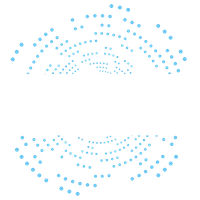In today’s fast-paced digital world, organizations face more cyber threats than ever before. Whether it’s advanced ransomware attacks or sneaky phishing scams, the types of threats are broad and always shifting. To stay ahead, many organizations are now relying on Cyber Threat Intelligence (CTI). So, what is CTI exactly, and how does it help organizations? Let’s break it down.

Understanding Cyber Threat Intelligence
Cyber Threat Intelligence (CTI) is all about gathering, analyzing, and sharing information regarding potential or existing cyber threats. This helps organizations get a clear view of their threat landscape, predict possible attacks, and strengthen their defenses. Rather than just knowing an attack might happen, CTI dives into who might launch the attack, how they might do it, and what the consequences could be.
Key Components of CTI Include:
- Data Collection: This involves pulling raw data from various places like internal network logs, public threat databases, and dark web forums.
- Analysis: This is where the data gets examined to find patterns, trends, and threats, often combining information from different sources for a complete picture.
- Dissemination: The analyzed intelligence is then shared with relevant stakeholders in a useful format, like reports, alerts, and recommendations.
How Cyber Threat Intelligence Helps Organizations
1. Proactive Defense
Instead of waiting for an attack to occur, CTI allows organizations to take proactive measures. By understanding the tactics and methods of cybercriminals, organizations can address potential threats before they happen. For example, if CTI shows that a certain vulnerability is being targeted, an organization can prioritize fixing it.
2. Improved Incident Response
When a security breach happens, having CTI can make a big difference in how quickly and effectively the organization can respond. For instance, if ransomware strikes, CTI can provide details about the specific strain, known indicators, and recommended steps to tackle it, speeding up the response and reducing damage.
3. Enhanced Threat Awareness
CTI helps organizations grasp their threat landscape better, including emerging threats and attack techniques. This knowledge allows them to assess their risk level more accurately and make better decisions about their cybersecurity strategy and investments.
4. Better Resource Allocation
With actionable intelligence, organizations can direct their cybersecurity resources more effectively. If CTI points out that a particular type of attack is increasing, resources can be focused on defending against that specific threat rather than being spread too thinly.
5. Strategic Decision Making
CTI provides executives and decision-makers with a broader view of cyber threats, helping them make informed choices about technology investments, security policies, and risk management strategies. A well-informed approach can improve overall business resilience.
6. Compliance and Risk Management
For many organizations, meeting regulations and standards is crucial. CTI helps by providing proof of due diligence and enabling better risk management, which can prevent regulatory fines and boost the organization’s reputation.
7. Collaboration and Information Sharing
CTI often involves working with other entities like industry groups, government agencies, and other organizations. Sharing intelligence and being part of information-sharing networks can enhance an organization’s knowledge and improve collective efforts to defend against cyber threats.
Conclusion
Cyber Threat Intelligence (CTI) is essential for organizations aiming to stay ahead of cyber threats. It involves collection, analysis and sharing of data about potential or active cyber threats, providing a comprehensive view of the threat landscape. By leveraging CTI, organizations can predict attacks and bolster their defenses. CTI encompasses several key elements: gathering data from diverse sources, analyzing it to uncover patterns and potential threats, and distributing this intelligence to key stakeholders in actionable formats.
The advantages of CTI for organizations are significant. It enables proactive defense strategies, enhances response efficiency during security incidents, and improves overall threat awareness. Additionally, it supports better allocation of cybersecurity resources and informed strategic decisions. CTI also assists in meeting regulatory requirements and managing risks, while promoting collaboration and information sharing with other entities to strengthen collective cybersecurity efforts.
As cyber threats keep evolving, using Cyber Threat Intelligence isn’t just an option—it’s essential for securing the future of any organization.
For those looking to deepen their understanding of CTI and how to advance their practices, we’ve previously explored the concept of CTI Maturity Levels in another blog. You can check out that blog to learn more about capabilities at different stages. Read about CTI Maturity Levels here.
Contact Us
Unsure which cybersecurity defense framework is the best fit for your company? Our experts are here to help! Contact us to discuss your specific security needs and explore the best solutions tailored to your organization. Let us assist you in enhancing your cybersecurity stance with the right SOC strategy. Reach out today, and let’s ensure your assets are protected with the optimal security operations center for your business.
Post written by Zarkica Bakic, Galia IT.





